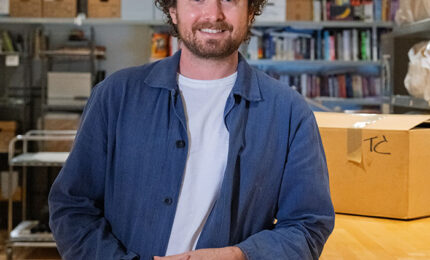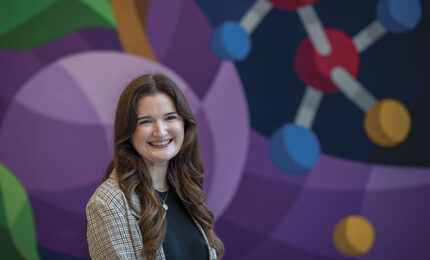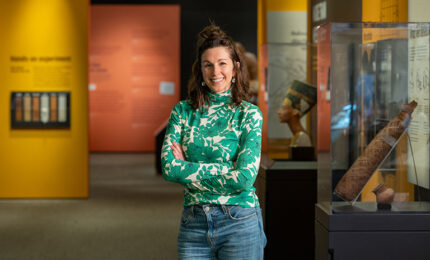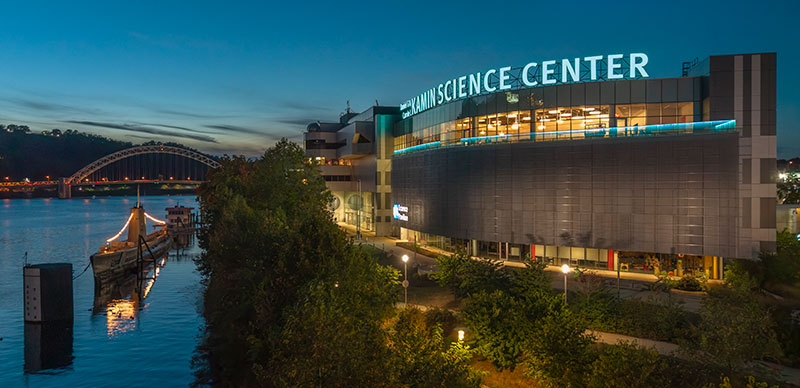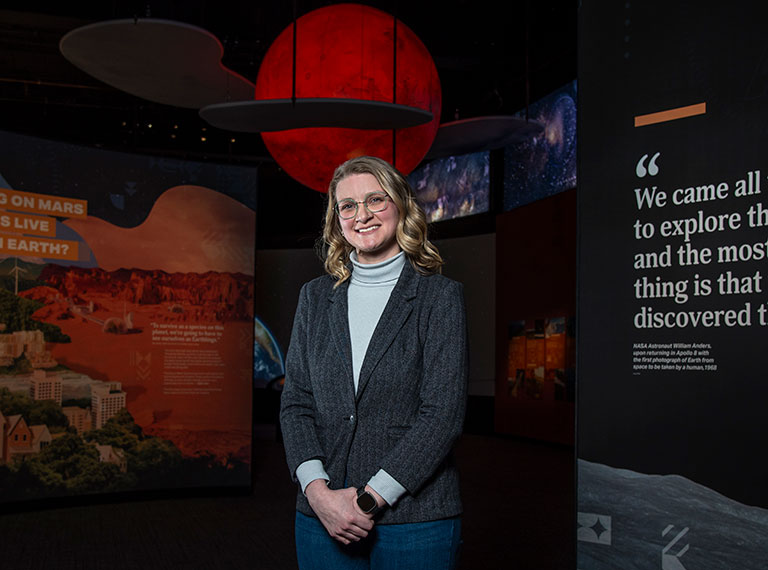 Photo: John Schisler
Photo: John SchislerThere’s a movie poster of Harrison Ford’s iconic character Indiana Jones fixed to Hope Gillespie’s office wall at Carnegie Science Center. It is there for professional inspiration as much as workplace decor. “I cannot overstate the influence Indiana Jones has had on my life,” says Gillespie, who is the museum experiences officer at the Science Center. The film franchise piqued her interest in archaeology—she holds a bachelor’s degree in archaeology from The George Washington University and a master’s degree in the discipline from University College London. But she also just loves the character’s catchphrase about artifacts—“It belongs in a museum”—that informs her work to this day. Since joining the Science Center in 2021, Gillespie has put her archaeology background to use by spending months researching upcoming exhibitions. Her work ranges from studying delicate waterlogged objects in TITANIC: The Artifact Exhibition, the blockbuster exhibition that closed in April, to researching the process of animation for The Science Behind Pixar, which opened May 25. Gillespie trains staff and produces supplementary materials to enhance exhibitions. She also spends a lot of time answering visitors’ questions, which is the part of her job she loves most. “I love teaching,” Gillespie says. “I didn’t think that informal education was my superpower until I started to do it.”
Q: What brought you to the Science Center?
A: I grew up (in McDonald, Pennsylvania) going to the Science Center and the Carnegie Museums in Oakland. In college I became interested in museum studies. Then in 2021, they were expanding the department and needed to hire two assistant managers.
I’m not a scientist. I will be the first person to admit that. But there’s something special about being able to communicate science to other people. Archaeology is the most science-y of the humanities, but it is also the most human of the sciences.
Q: What do you love about your job?
A: I’ve had moments that have absolutely brought me to tears. You see a little kid and he wants to tell you everything he knows about the Titanic. You tell him something he didn’t know. He goes home and builds a love of maritime history. It creates a lifelong love of science and that’s what really makes it worth it. It’s not just kids; adults come in and they’re curious. The curious parts of people are often the best parts of people, and that’s what we get to see here.
Q: What has been an unusually challenging exhibition for you?
A: The most challenging for me personally is Pixar. We’re super excited to have it, but it’s not collection-based. There aren’t many cases with objects in it; it’s all interactive. I am learning the science behind computer animation. I am starting at ground zero and basically building my way up to understanding animation. I get to become an expert on something different every six months, which I never thought I would like, but I do.
Q: What role did you play during the run of TITANIC: The Artifact Exhibition and what do you think about its immense popularity as the most visited exhibition in Carnegie Science Center history?
A: I was involved in almost every aspect of Titanic. I did research, trained docents, trained museum staff, and created tours. I worked on the floors. I spent almost every weekend in the Titanic exhibition, helping people go through and setting expectations. The No. 1 thing that sticks out to me: It’s heartbreaking and very emotionally heavy to do. You’re talking about people’s lives and the night they died.
Q: What has been your favorite exhibition, and how did it appeal to your archaeology background?
A: As an archaeologist, I loved the Vikings: Warriors of the North Sea exhibition. I especially loved the gold Aby crucifix. It brings a lot of iconography together. I think it represented everything that the Vikings exhibition wanted you to know about Viking culture, which is how connected it was, how it was faith-based, and how those interactions really shaped what it became.
Vikings have kind of a cartoonish image. I think the entire point of that exhibition is to show that they were much more than that; not just murdering and pillaging and raiding. They were artists. They were more than these warriors. I think that’s very much the point of creating exhibits, specifically about culture that way—it’s to show how multifaceted they are.
Q: If you could choose a new exhibition on any topic for the Science Center, what would it be?
A: I am an archaeologist, but specifically the area I studied was Egyptology. If I love anything academicwise, it’s Egyptology. There are two really cool traveling exhibits out there. I would love a King Tut exhibit. There’s also a Dead Sea Scrolls exhibit I would love to get.
